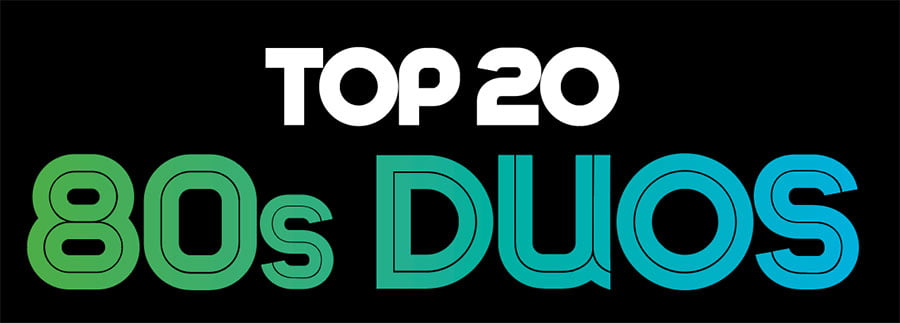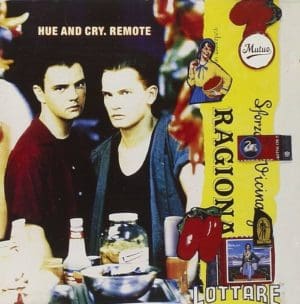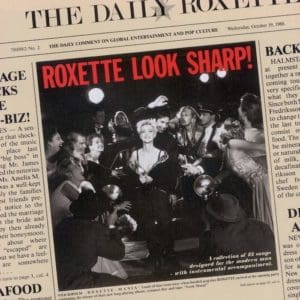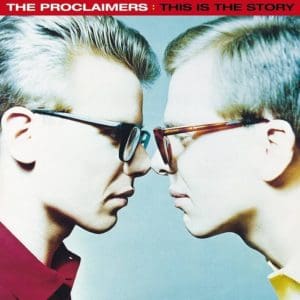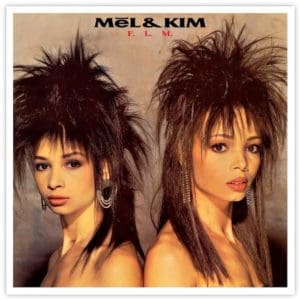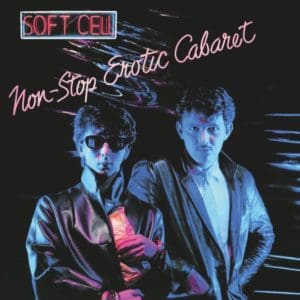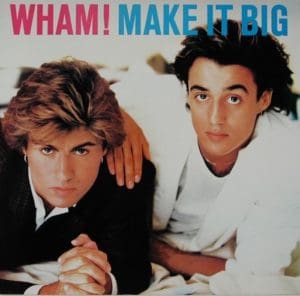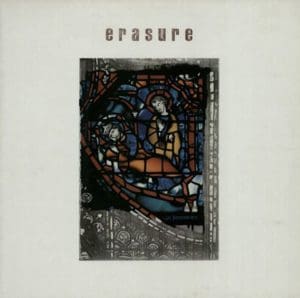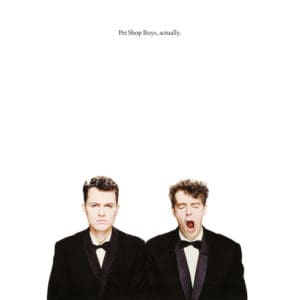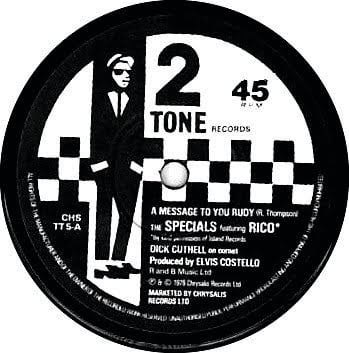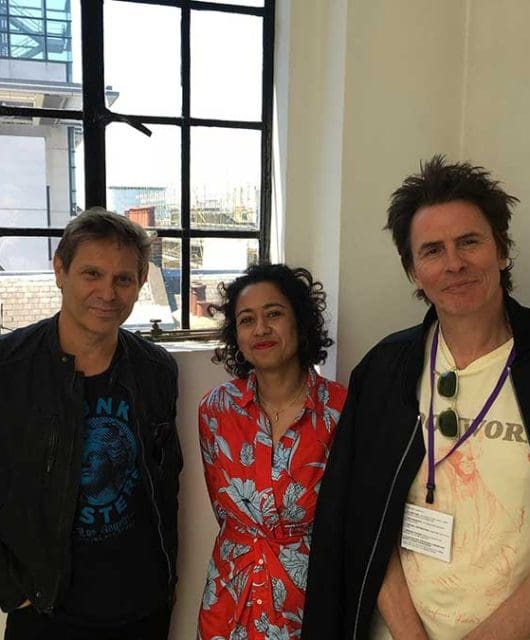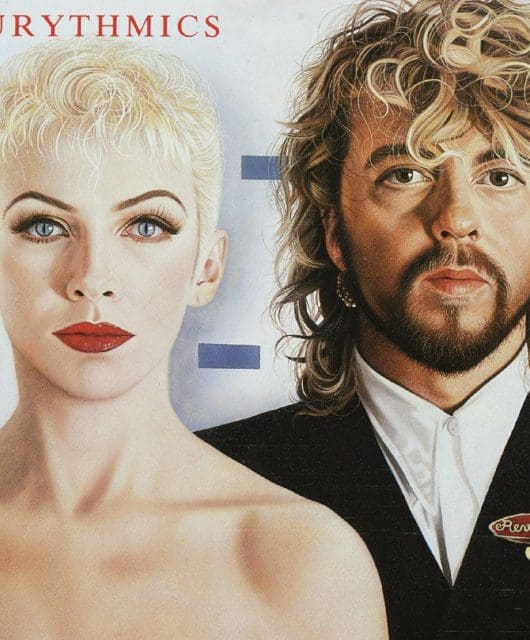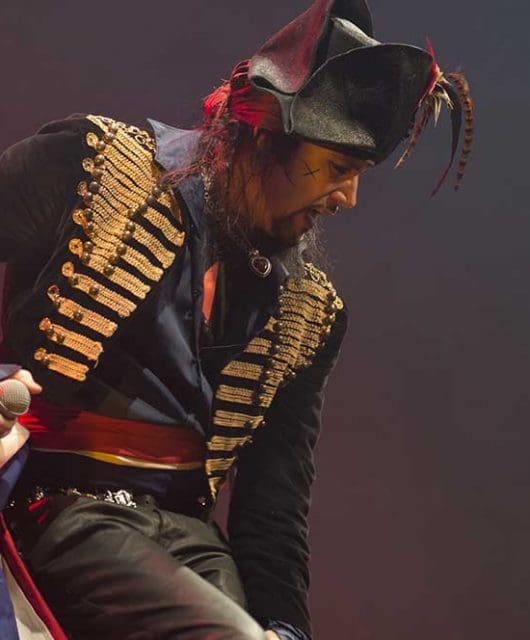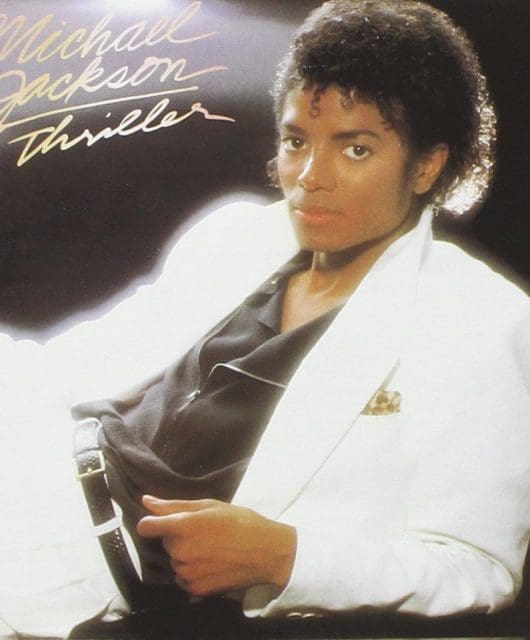Top 20 80s pop duos
By Jon O'Brien | February 21, 2022
In this list of the top 80s pop duos we look at how, in music, two is sometimes better than one…
Contrary to De La Soul’s hip-hop classic, three isn’t necessarily always the magic number. From French and Saunders to Cagney and Lacey, Bill and Ted to The Chuckle Brothers, the 80s spawned a whole host of acts who proved that sometimes the best things really do come in twos. The UK charts were also full of dynamic pop duos who, despite their often chalk and cheese nature, complemented each other perfectly. Focusing solely on their output in the decade they found fame, here’s a look at 20 of the best.
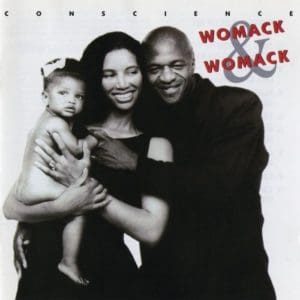
20 Womack & Womack
Linda and Cecil Womack certainly had the most, erm, interesting, backstory of any 80s duo. The former’s mother married the latter’s brother just months after her soul legend husband Sam Cooke was murdered in mysterious circumstances, essentially making the pair step-uncle and niece until they wed in 1978. The Womacks weren’t afraid to touch on their convoluted family tree in the music they began making together five years later. But there was always a warmth to their understated blend of gospel, soul and R&B, particularly on Teardrops, a glorious sad banger which has since acquired modern standard status.
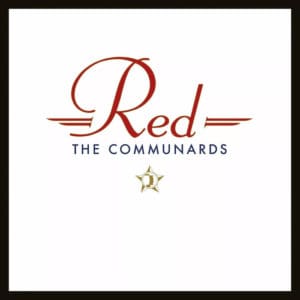
19 Communards
Having briefly shared the stage in Bronski Beat with Richard Coles, Jimmy Somerville then broke away from his first Hi-NRG outfit to found an even more successful one with the former saxophonist/future vicar. Communards may be best remembered for their joyous renditions of Harold Melvin & The Blue Notes’ Don’t Leave Me This Way (with Sarah Jane Morris) and The Jackson 5’s Never Can Say Goodbye but the likes of For A Friend, one of the first pop singles to address the AIDS crisis, and the scathing anti-Thatcherism of Reprise proved they had much more to offer than 70s disco covers.
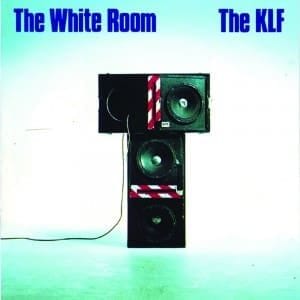
18 The KLF
Bill Drummond and Jimmy Cauty literally wrote the book on how to have a No.1 (the easy way) following a mash-up of Doctor Who and glam-rock self-described as “the most nauseating record in the world” – the single was Doctorin’ The Tardis by The Timelords. The pair weren’t quite so dismissive after dropping all the science-fiction references and embracing the burgeoning acid house scene. A stadium-sized remix of 3am Eternal would later add to their chart-topping tally. But as with What Time Is Love?, its original ‘Pure Trance’ version had already established The KLF as British dance music’s new gods.
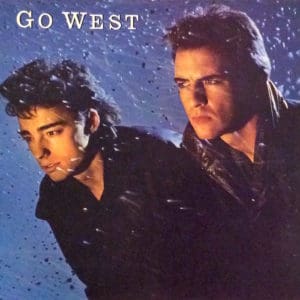
17 Go West
Formed in London by the gravelly-voiced frontman Peter Cox and mullet-haired guitarist Richard Drummie, Go West hit their UK peak in the mid-80s, picking up British Breakthrough Act at the BRIT Awards and scoring their sole Top 10 hit with We Close Our Eyes. They remained MTV and VH1 regulars on both sides of the Atlantic for several years thanks to a fist-pumping mix of new wave, pop-rock and blue-eyed-soul. Oh, and as captured several times by music video maestros Kevin Godley and Lol Creme, a fondness for white singlets that would put Die Hard’s John McClane to shame.
16 Hue And Cry
The late-80s other Scottish hitmaking siblings, Coatbridge’s finest Hue And Cry were at the forefront of the yuppie-friendly scene known as sophisti-pop. Sharp-suited frontman (and future journalist) Pat Kane always dressed like he’d just clocked off from a trading floor shift at Canary Wharf. Accompanied by brother Greg’s dramatic piano-driven arrangements, his rich, soulful croon was often used as a tool to skewer that whole culture. None more so than on their signature hit Labour Of Love, an anti-Tory tirade apparently designed to hit that sweet spot between Sinatra and Scritti Politti.
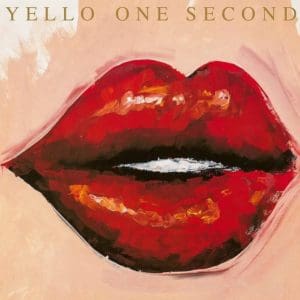
15 Yello
Yello began life as a trio but only started rivalling Toblerone as Switzerland’s biggest export after Carlos Perón parted company with instrumentalist Boris Blank and baritone-voiced Dieter Meier in 1983. Think of any teen comedy since Ferris Bueller’s Day Off and there’s a good chance their lustful Oh Yeah graced its soundtrack, while the frantic electronic jazz of The Race unsurprisingly became a go-to for sports coverage, too. The moustachioed men were just as brilliantly playful on their parent albums with One Second surely the only record to feature post-punk icon Billy Mackenzie and Shirley Bassey.
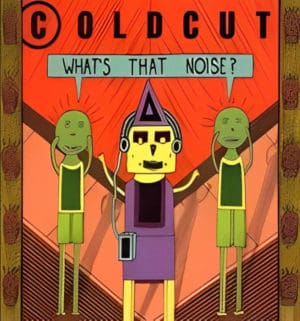
14 Coldcut
Coldcut’s Jonathan More and Matt Black rarely get the credit they deserve for changing the game in the late 80s. Combining James Brown with The Jungle Book, first single Say Kids What Time Is It? was the UK house scene’s ground zero. Featuring artists as disparate as Queen Latifah and Mark E Smith, debut album What’s That Noise? paved the way for today’s collab-heavy affairs. And they also introduced us to Yazz and Lisa Stansfield, produced that definitive remix for Eric B & Rakim and co-founded pioneering multimedia collective Hex. Their own label, Ahead Of Our Time, was aptly-named.
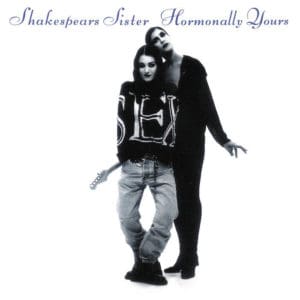
13 Shakespears Sister
Forming a goth-tinged pop-rock outfit with a former Bette Midler backing vocalist didn’t seem like the most obvious post-Bananarama move for Siobhan Fahey. Yet suggested by then-husband Dave Stewart, it proved to be an inspired one. With Marcella Detroit on board, Fahey’s one-time solo project Shakespears Sister evolved into an intriguing ying-yang, with the former playing the otherworldly soprano and the latter a seductive femme fatale. Buoyed by the success of Top 10 single You’re History, 1989 debut album Sacred Heart further proved that their musical partnership, if not always their personal one, was gloriously harmonious.
12 Roxette
In-between the split of ABBA and the rise of Ace Of Base, Per Gessle and Marie Fredriksson picked up the mantle of Sweden’s most potent musical force. Under the guise of Roxette, the pair dominated the year of 1989 in the States, reaching the top of the Billboard Hot 100 with both the stream-of-consciousness pop-rock of The Look and the melodramatic power ballad Listen To Your Heart (Dangerous only made it to No.2). The UK were a little slower to respond but eventually succumbed to the hook-laden approach brilliantly christened by the duo as ’Don’t Bore Us, Get To The Chorus’.
11 The Proclaimers
Helped along the way by the likes of The Housemartins, Gerry Rafferty and various Dexys Midnight Runners, bespectacled twins Charlie and Craig Reid usurped The Krankies as the North of the Border’s biggest duo. The Proclaimers were undoubtedly the proudest, too, with their rousing working class tales performed in an Edinburgh brogue thicker than a bowlful of Scott’s Porage Oats. While the success of I’m Gonna Be (500 Miles) once threatened to become an albatross around their necks, heart-warming stage musical-turned-motion picture Sunshine On Leith has since alerted audiences to their other folk-pop joys.
10 Mel And Kim
Mel And Kim’s story would famously end in the most tragic of circumstances. However, for two years the Appleby sisters shone brighter than any other star from the Smash Hits crowd. They also brought out the best in the era’s biggest hit factory. Indeed, whereas most of Stock Aitken Waterman’s output sounded calculated to the nth degree, their work on 1987’s F.L.M. felt entirely effortless. Mission statement Respectable remains one of the decade’s most addictive No.1s, but much of its parent album manages to combine the siblings’ streetwise appeal with gigantic pop hooks to similar effect.
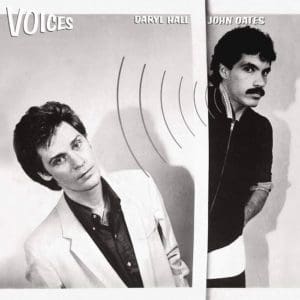
9 Hall & Oates
Daryl Hall and John Oates had achieved considerable success in their native United States throughout the 70s. But it wasn’t really until 1980’s Voices that British record buyers gave in to their seductive brand of blue-eyed soul. The likes of I Can’t Go For That (No Can Do), Maneater, Out Of Touch, Method Of Modern Love and You Make My Dreams have become even more popular in the digital age, with the latter racking up a colossal billion streams to propel the Philadelphians past Simon And Garfunkel, The Carpenters and even Robson And Jerome as the biggest-selling duo of all time.
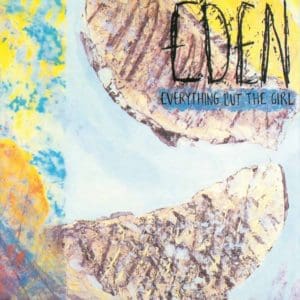
8 Everything But The Girl
Everything But The Girl appeared to surprise everyone with their dancefloor about-turn in the mid-90s – husband-and-wife Ben Watt and Tracey Thorn had spent the previous decade hopping from one genre to the next in a similarly understated fashion. 1984 debut Eden tapped into the sophisti-pop scene spearheaded by The Style Council, follow-up Love Not Money echoed The Smiths’ jangly indie-pop, while Baby, The Stars Shine Bright was a lavish nod to the Burt Bacharach songbook. Their beautifully melancholic cover of I Don’t Want To Talk About It left many dismissing EBTG as easy-listening merchants: they were anything but.
7 Soft Cell
Even by early 80s standards, Soft Cell were particularly transgressive. Essentially the red light district in album form, debut Non-Stop Erotic Cabaret featured odes to porn cinemas, S&M and post-hedonistic comedowns, with the banned fetish-heavy video for Sex Dwarf even landing Marc Almond and Dave Ball in trouble with the police. The pair undoubtedly enjoyed revelling in the sleaze and sordidness of suburban life, a little too much you could say judging by their quick demise. Even when they were knowingly falling apart, though, their curious mix of theatrical torch songs and bleak electronica always intrigued.
6 Wham!
The Princess Diana-esque bouffant, the lilo-lounging, the shuttlecock-stuffed shorts. It’s difficult to equate George Michael the serious artiste with the carefree pin-up who, alongside Andrew Ridgeley, created the boyband prototype. Despite the anti-establishment themes of their early singles, Wham!’s sunny blend of soul-funk and teen-pop only appeared to have one goal in mind – making people smile. By the time they bid their amicable farewell at Wembley, the duo had amassed five No.1s, added to the Christmas song canon and, thanks to Careless Whisper, laid the groundwork for the most effortless solo transition in pop history.
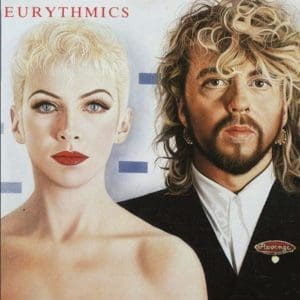
5 Eurythmics
Formed from the ashes of The Tourists, Eurythmics songs neatly bookended the 80s with a catalogue of hook-laden hits crossing musical and indeed gender boundaries. While debut In The Garden picked up where their previous new wave incarnation left off, follow-up Sweet Dreams (Are Made of This) pursued a deliciously icy synth-pop sound which, alongside Annie Lennox’s soulful vocals, made them instant Second British Invasion favourites. Dave Stewart later steered Eurythmics into everything from empowering soul to glossy rock with aplomb. But it’s their European-inspired electronica which places them in the decade’s hall of greats.
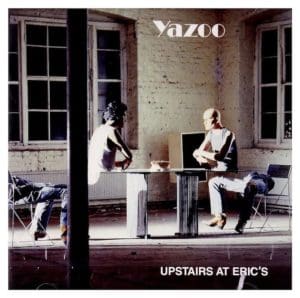
4 Yazoo
Yazoo might not have matched the sales, or longevity, of this list’s other major contenders: Alison Moyet and Vince Clarke split acrimoniously in 1983, shortly after being crowned the BRIT Awards British Breakthrough Act. But the two albums they recorded (Upstairs At Eric’s, You And Me Both) had the kind of impact most longer-lasting groups could only dream of. Clarke’s production – expanding on the primitive synth-pop of his similarly brief stint in Depeche Mode – and Moyet’s powerhouse tones set the blueprint for vocal house music, while haunting debut single Only You is a prime contender for the decade’s best.
3 Erasure
Not content with founding two seminal outfits in the early 80s, Vince Clarke then struck gold again in the second half of the decade by teaming up with arguably his biggest fan. With his flamboyant stage presence and dramatic way with words, Andy Bell proved to be the perfect foil for pop’s ultimate straight man, with 1988’s The Innocents kickstarting an incredible run of four consecutive chart-toppers. Although Erasure are often considered the bridesmaids to the era’s other dominant male synth-pop duo, life-affirming anthems Sometimes, Stop! and
A Little Respect proved they were often on an even keel.
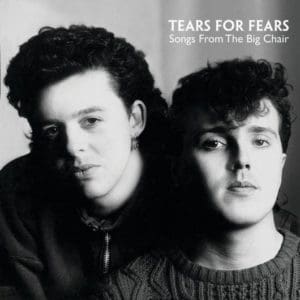
2 Tears For Fears
Undeterred by the failure of previous mod revivalist group Graduate, Roland Orzabal and Curt Smith joined forces again in 1981 for a more forward-looking outfit. Named after a form of primal scream therapy, Tears For Fears quickly established themselves as the synth-pop scene’s premier philosophers, with debut album The Hurting delving deep into both parties’ childhood traumas. They were no less ambitious on Songs From The Big Chair, a widescreen follow-up which produced two US chart-toppers, and The Seeds Of Love, a long-delayed epic incorporating gospel, prog and the pair’s obvious awe of The Beatles.
1 Pet Shop Boys
Of course, there was only ever going to be one winner in this list of the top pop duos. After all, Pet Shop Boys albums redefined the 80s musical landscape with a post-modern sound informed by club culture, societal issues and their frontman’s stint as an assistant editor for pop bible Smash Hits.
Neil Tennant and Chris Lowe made for slightly detached hitmakers: the cover of their magnum opus Actually literally shows the former mid-yawn, while each of their elegiac tales was delivered with an archness that would make Noël Coward proud.
Yet this was a refreshing selling point in an era when they were battling the shiny, happy Stock Aitken Waterman brigade for chart supremacy. In fact, it’s Tennant’s deadpan tendencies that has inspired some to cite West End Girls – an evocative ode to inner-city life which remains their finest hour – as both the UK and US’s first hip-hop No.1.
Pet Shop Boys’ songs were equally pioneering and they took synth-pop to new bombastic heights. But their cover of Elvis Presley’s Always On My Mind and Dusty Springfield duet What Have I Done To Deserve This? showed an appreciation of the past, too. Other than Madonna and Michael Jackson, no other 1980s artist enjoyed such a majestic imperial phase.
Watch your favourite PSB videos here
Sign up for the Classic Pop newsletter
Did you enjoy this list of the top pop duos? Then check out our feature on the best 80s cover versions


